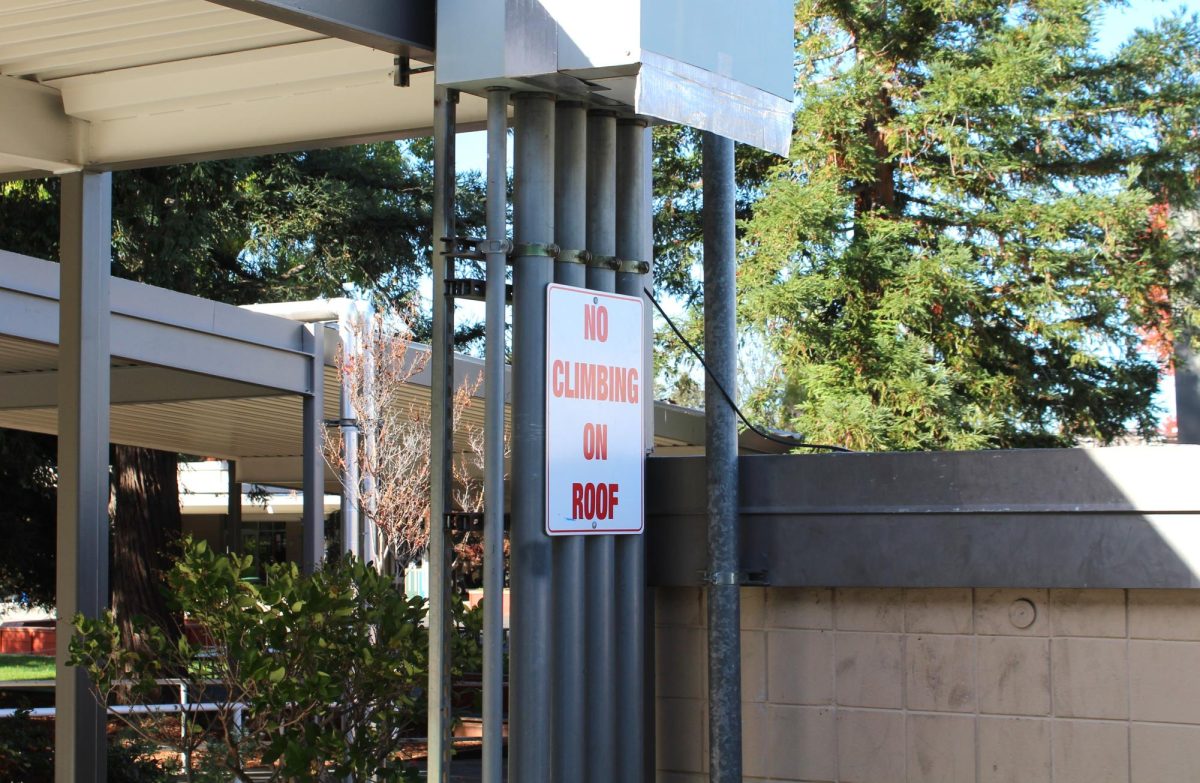As students got back to the swing of things in second semester, three new board members also became acquainted with their new positions on the school board. Here is an update on how they’ve been doing:
Steve Chen: former private marketer and Los Gatos High math teacher
Between 1984 and 2015, current board member Steve Chen worked in high tech sales and private marketing for various Silicon Valley companies like Rambus and Tessera.
“Each of these companies had different challenges, and as I got older, I got frustrated with the challenges,” Chen said. “I began to look for something different and decided to change industries.”
Chen said he “always had the idea” to go into the teaching field due to a “moral obligation to give back to the community.” As a result, he went through the credentialing process and started teaching math, primarily Algebra 2, at Los Gatos in 2017. His experience teaching two to three Algebra 2 classes as a part-time teacher at LGHS influenced his priorities going into his 4-year term.
“I was really able to commit to my students, and that was because I was teaching part time,” said Chen, who had roughly 100 students when he taught, compared to 150 students for a full-time teacher with five classes of 30. “That is what really enabled me to focus on every student, and my personal goal was ‘No Child Left Behind.’”
While Chen said that his “No Child Left Behind” motto may seem tacky and overused, teaching Algebra 2 meant that Chen had a wide spectrum of students. Some were advanced, taking the course in their underclassmen years, while others were taking the class only because it was mandated for graduation.
Chen described two students he fondly remembers who have influenced his beliefs on what it means to be academically resilient.
The first: a student who, though not talented at math, tried her hardest and came in every day during tutorial to relearn math concepts taught the previous day. She finished with a borderline B, saying that it was the “best math experience” she’s ever had.
The second: a student who, much like the first one, struggled under his class with the additional burden of heavy parental pressure to succeed. Chen spent hours with her after school and on the weekends, often one-on-one, to help her understand the concepts.
At Los Gatos, Chen also had one class as part of the NOVA program, now called VALOR, which helps students such as those with disabilities or others who struggle with the traditional school format.
“Los Gatos and Saratoga both have great, gifted students, but they, like a lot of other schools, have students who struggle too,” Chen said. “I’m more interested in developing ways to help these struggling kids become more successful. There’s AP programs and advanced programs for those who are gifted and self-motivated, so I want to focus on support services, mental health and alternative paths.”
After deciding to retire from teaching, Chen said he was recommended by other teachers to apply to the board. Chen was formally inducted as a board member on Dec. 13, and he attended two off-site conferences with Superintendent Bill Sanderson and the rest of the board to help him get acquainted with his new job and its responsibilities.
Chen had many election goals coming into his term, but said he wants to focus primarily on renewing the parcel tax, which would allow the district to gain steady, additional funding. While voters approved a no tax increase extension of the high school district’s $49/parcel tax in May 2016, the next renewal date is set for 2025. He also emphasized pushing through the many projects already in the pipeline, such as implementing solar panels in both schools.
However, one challenge Chen has already faced during his time on the board is California’s 1953 Brown Act, which severely limits what he can discuss with his fellow board members. Because the act guarantees the public a right to participate in the meetings of local legislative bodies and seeks to prevent underhand dealings, board members cannot meet with more than one other board member to discuss board business, nor can they meet one-on-one with multiple board members consecutively in what’s called a “serial meeting.”
As a result of the law, Chen cannot simply call a meeting with his fellow board members to tackle a problem and present a unified front, a strategy he would’ve utilized in his previous high tech and sales jobs.
“The challenge of being a public servant is that I can’t do things the way I’m used to doing,” Chen said. “I can only talk to [my fellow board members] in public, and sometimes they can have a completely different idea of how to tackle a problem. I know there’s a lot of frustration around the board’s long bureaucracy, but it’s difficult to make a quick decision when you have to wait for public comment and can only meet with other board members biweekly.”
Alex Shultz: former science teacher
As a former science teacher at LGHS, current board member Alex Shultz had first-hand experience seeing the variety of paths taken by students and teachers, forming the basis for his goals as a board member.
Among his priorities of broadening consensus at school sites and raising teacher salaries to increase staff retention, to name a few, Shultz advocates for improving the stress-reducing programs by “taking advantage of the creative outlets that exist,” such as Saratoga High’s humanities-related electives, the student center and the wellness center.
In his teaching experience, Shultz recalls performing simple magic tricks before each test to help his students calm down. While effective, he said that teachers know their students best and should be the ones to devise specific activities like the ones he came up with.
“[As board members], our job is not to micromanage; ideas that come up at the school site are better than hearing the same thing from an outside source,” Shultz said. “Our role is to give [teachers] the freedom and budget to address those needs.”
He also proposed to implement a coding curriculum by partnering with coding bootcamps to support students who wish to go directly into the workforce.
The idea behind this proposal came from an interaction with one of his previous students. Twenty years ago, when Shultz had noticed that one of his students stopped doing any work, he learned that they had started an independent, one-person website development business and earned thousands a week. The amount of their additional homework had accumulated to the point where the student became too tired to complete his schoolwork on time.
“At first, when the student said that he does work on his computer, I thought he was playing video games,” Shultz said. “[It made me realize that] there are lots of students on both campuses who learn and do coding totally on their own because they’re interested in it and start teaching themselves.”
Shultz also cited his son’s experience with similar alternative pathways: although his son secured his dream job of building skyscrapers in Manhattan, he later found out he hated it, abandoning the career for coding as a structural engineer instead.
Throughout his teaching career, Shultz has encountered students interested in pursuing jobs straight out of high school, entering fields ranging from fashion design to the culinary arts and electrical engineering. The coding program would be a start to increasing alternative paths and supporting the diverse goals of the student body.
Shultz also supports introducing a mentoring program for new teachers. The program would involve scheduling an additional prep period for new teachers to “shadow” a veteran teacher in the same subject.
While the program may be “fairly costly,” from his personal experience, it’s extremely effective for integrating new staff into the district and setting an example for a variety of teaching methods.
“Staff would be able to build a collaborative relationship with each other, making both parties better,” he said. “Assimilating people into the culture of the school and their department would benefit the students and consequently the school as well, since starting a new teaching career is such a steep learning curve.”
When he first started teaching at LGHS 30 years ago, for example, Shultz had voluntarily given up his prep period to mentor under John McDonald, a science teacher who had been teaching there for 40 years. McDonald had helped write the accepted high school science textbook at the time, which used the biological science curriculum series introduced after the American public felt “behind” following the launch of Sputnik, the first artificial Earth satellite launched by the Soviet Union in 1957.
Shultz said his mentorship with McDonald had a “profound effect” on his view of what his role was as a teacher.
“I thought I was doing a great job, taking notes and the classical stuff while mentoring under him,” Shultz said. “He put his arm around me and said, ‘you know, if you do it this way, you let the students discover it themselves. They get all that stuff on their own; it’s your job to be their guide and let them become their own teacher, and that will be their most important lesson from high school.’”
Even though all propositions — improving stress-relief activities and introducing a new coding and teacher-mentorship program — have had clear benefits in his personal experience, Shultz said that additional funding is crucial.
“The only way for that to happen is increasing the parcel tax, because the only additional funding we can come up with is through a parcel tax,” he said. “That’s part of our job as the board.”
Misty Davies: working mom to board member
As the only board member who’s currently a working parent with two children in the district — one sixth grader and one ninth grader — Misty Davies hopes to input her unique perspective into district discussions. Davies said that she hopes to foster policies that benefit students’ well-being.
“I’m convinced that as a parent in the district, you want more for your kids than just high test scores,” Davies said. “You want to have a connection to the community and fellow parents and staff members, so I think being involved in the community brings a different perspective.”
Coming into her term, Davies brings four major goals:
One: school safety, especially against gun violence. Davies is a Moms Demand Action Gun Sense Candidate, and she advocates to have a collective voice in the community to work toward a “middle ground” between lax policies and, say, implementing metal detectors and barbed wire. She referenced recent mass shootings in Oakland and Half Moon Bay, which for her, were too close for comfort.
“In the short term, if I have to put up with this for my kids, I guess I will, but I don’t want to put up with this for my grandkids,” Davies said.
Two: ensuring stakeholder feedback. Davies said she believes the new district has been doing a much better job at connecting with the community at large, and not just parents. She hopes to do similarly and connect with not just parents but also community members.
Three: staff retention. While the board has already increased substitute pay and capped the amount of pay lost out by teachers taking extra sick leave days, Davies says she will “keep looking for places to [increase pay] and continue to have the best teachers.”
Four: improving school culture and mental health.
“High performing schools like Saratoga High have special stresses that come with it, and I think the investment in the Wellness Center is a great step,” Davies said. “But I think we need to do more proactive work to prevent mental illness, not just get stressed and then go ask for help.”
Like the other board members, Davies hopes to make meaningful changes to improve students’ mental health and academic goals through collaboration with the community and within the board.
“Even with the Brown Act, the board members and I are finding opportunities to legally get together,” Davies said. “We make sure that we’re aligned and have a unity of purpose, and the thing I like about this board is that we have this mindset of continual improvement.”


























